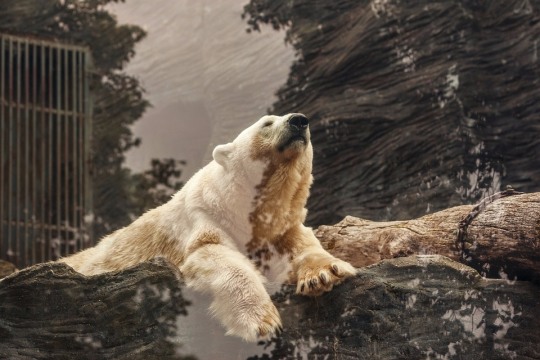
Polar bears in the North Beaufort Sea, Alaska, USA, hover over small ice lumps to catch seals. But as global warming began to melt ice chunks, it became harder for polar bears to find food.
The hungry polar bears inevitably head to the beach to eat whale bodies abandoned by hunters. Likewise, bears go to the village where they live to seek food. The appearance of polar bears frightens the inhabitants.
According to biologist Todd Atwood of the Alaska Science Center, about 20% of the bears in the area moved to town to find food.
The result was an increase in body weight and a decrease in mercury concentration. The human habitat where polar bears can find more abundant food is healthy and stronger for polar bears.
Professor Melissa McKinney of the University of Connecticut has pointed out that whale bodies left by hunters are a source of food that is predictable and easily accessible to bears.
Indeed, the number of bears migrating to the coast has increased steadily compared to 20 years ago. According to the study, 82 polar bears per day visit animal carcasses.
Whale corpses on the coast fill the hunger of polar bears, but whale corpses are depleted as soon as the hunting season is over.
Then the polar bears, lacking prey, may come down to the village and attack the houses where they live. Inhabitants of whale-hunting are now armed with guns to protect themselves from the bears.
As a result, when a larger number of polar bears descend into the village, "the amount of food that can be eaten per bear is reduced," Atwood added.
Polar bears are likely to return to towns where people live. But as long as the bears can get their food, the risk is small that residents will be attacked by bears, experts said.
![[Parenting] Polar Bear Moves to People’s Village due to Climate Change parenting polar bear moves to peoples village due to climate change](https://moontore.com/wp-content/uploads/2019/02/parenting-polar-bear-moves-to-peoples-village-due-to-climate-change-1200x700.jpg)


